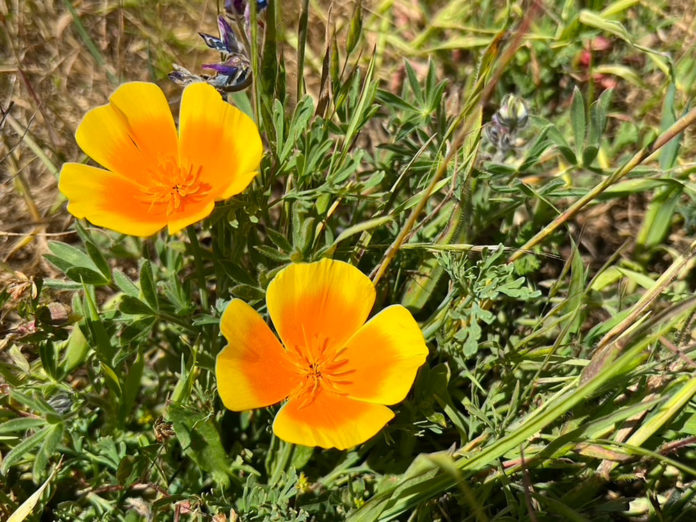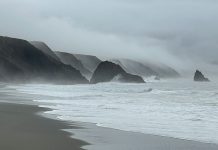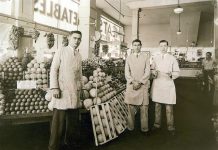By Pierre Ratte
Along hiking trails from Shell Beach to Red Hill this weekend, California’s state flower popped out of coastal grasslands with bright dollops of yellow and orange. Nicknamed “cups of gold” and “Mary’s sunshine cups”—a reference to the ever-cheerful Mary Poppins—these hearty flowers became California’s state flower in 1903. Eschscholzia californica was first observed along the coast by German explorers traveling from Russia to California on a three-year botanical expedition from 1815 to 1818.
In spring, the trails in Sonoma County can feel like a botanical expedition; so many wildflowers. With cell coverage and a plant identification app, anyone can be a naturalist. This past weekend, wild iris (Iris douglasiana), wild snapdragons, also known as “butter and eggs” (Linaria vulgaris) and California poppies were abundant.
Lesser-known flowers were also in bloom. Teasing out answers to botanical questions along the hike can be fun, and beyond fun, helpful. Is this plant Queen Anne’s lace, poisonous hemlock or cow parsnip? Perhaps elderberry? Is that poison oak or just a shiny leaf? On this hike, both cow parsnip and hemlock were observed. And yes, those shiny leaves were poison oak—if shiny leaves of three, let it be.
Fun facts: California poppies are xerophytic, phototropic and nyctinastic, meaning plants adapted to arid conditions, flowers oriented towards the direction of the sun and flowers closing at night to protect reproductive organs, respectively. A single California poppy can produce 80,000 seeds. Seeds can be viable for decades, awaiting the right conditions to bloom.
More facts: “Explosive dehiscence” is the term for seed dispersal from an exploding pod; poppy seeds can travel six feet upon pod release. California poppies have no psychotropic compounds; however, they have sedative effects, which contributed to a Spanish nickname, “dormidera”—sleepy one.
Mary Poppins was released by Disney in 1964. It grossed more than $100 million on a $6 million budget, elevating Disney’s movie making prowess. Mary Poppins was Julie Andrews’ first movie; she won an Oscar for Best Actress, winning over Audrey Hepburn in My Fair Lady.
The iconic music for Mary Poppins was written by Robert and Richard Sherman (“the Sherman Brothers”), who also wrote songs for Chitty Chitty Bang Bang, The Parent Trap, The Jungle Book and Charlotte’s Web. They wrote the world’s most played song, It’s a Small World, in 1963 for the Disney exhibit at the 1964-65 New York World’s Fair.









